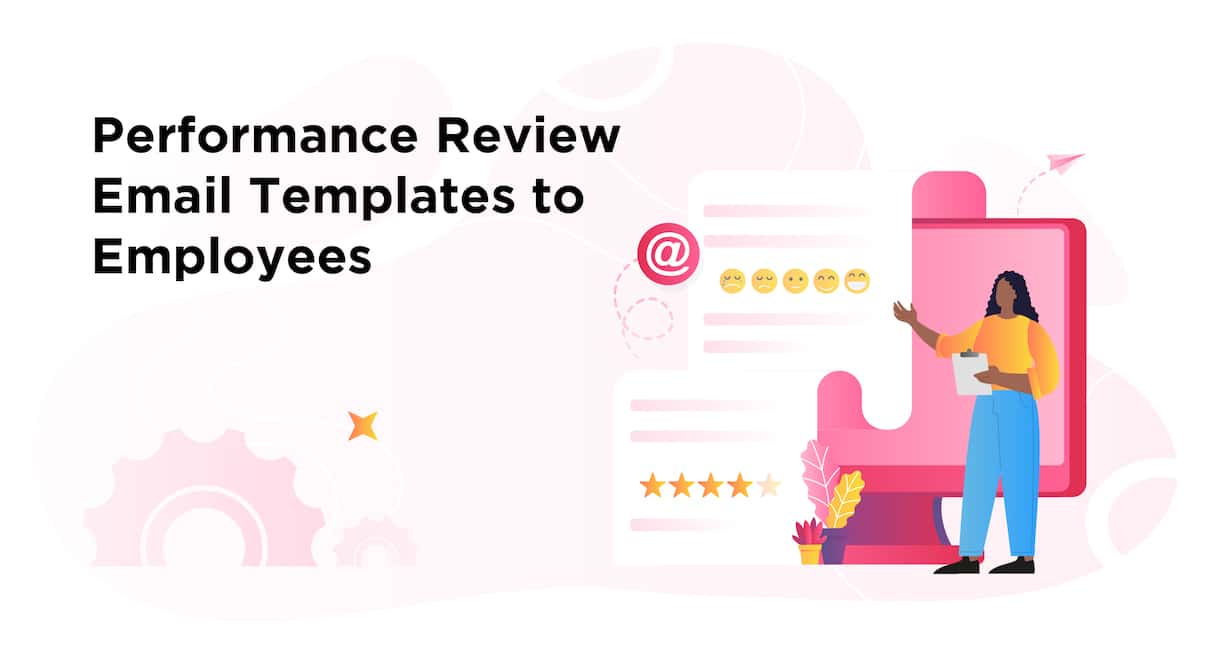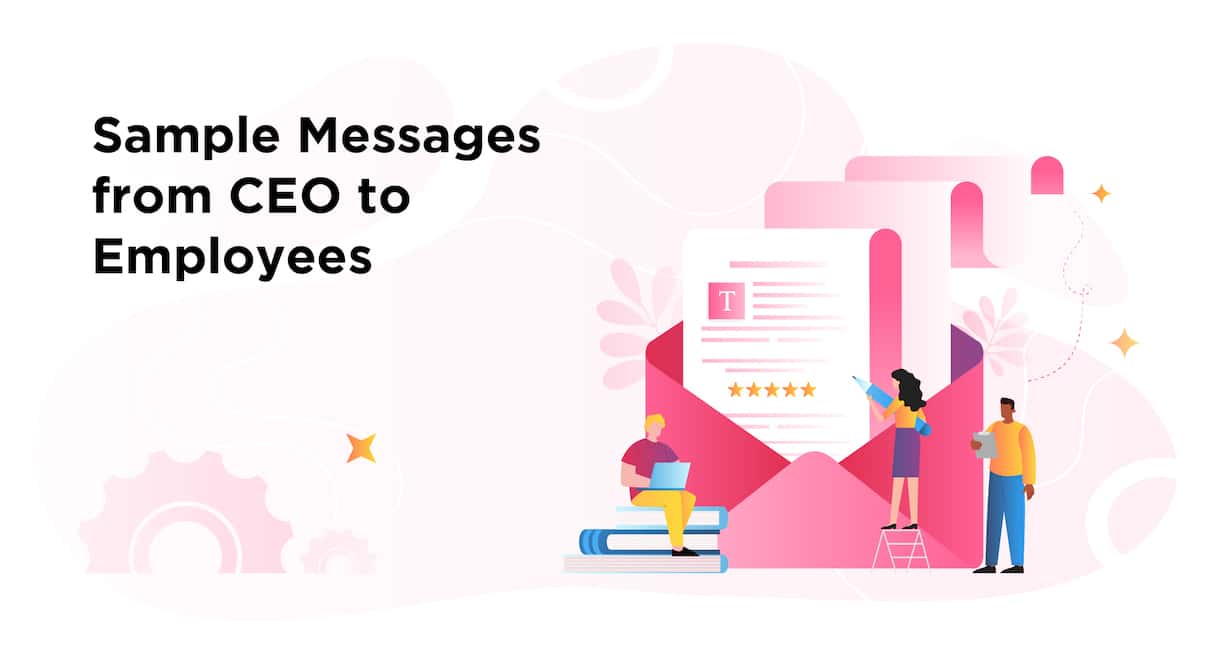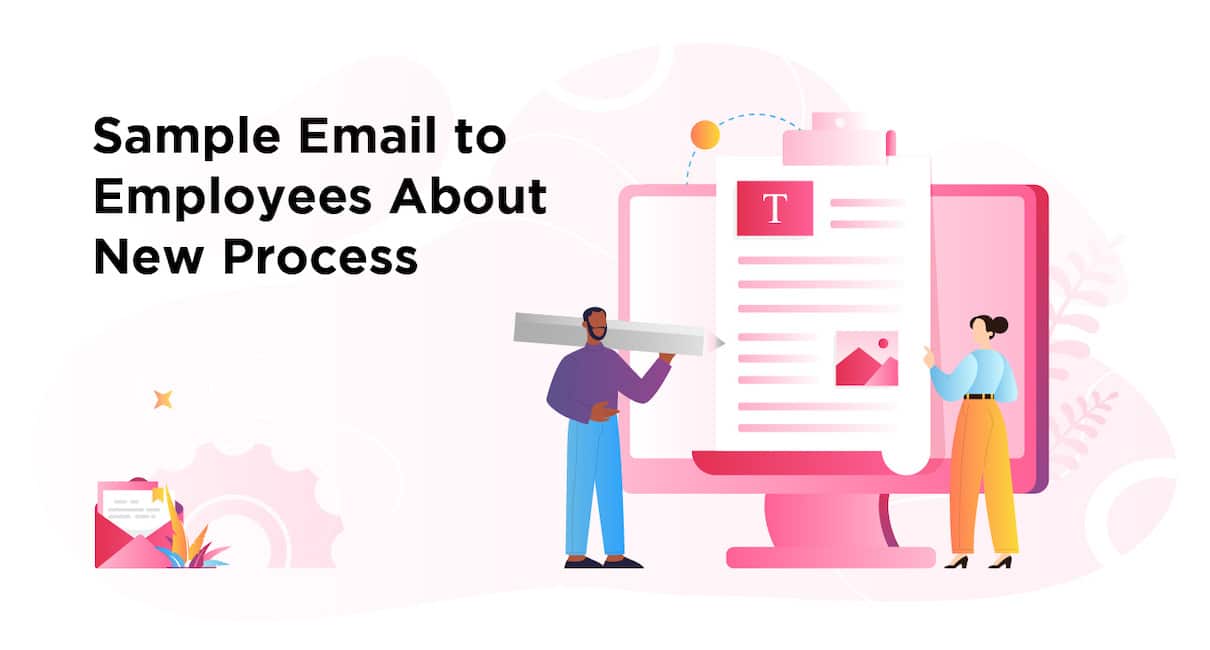Starting at a new company can be intimidating for new employees. Help your new hires feel welcome by sending a well-crafted welcome email to new employees.
New employees have a lot on their plate when first joining a company. Job training, team introductions, task scheduling, and other tasks comprise a steep learning curve for new employees.
A welcome email to new employees can help new hires and your organization. A well-crafted welcome email can have a big impact on your company’s employee engagement and onboarding process. It is so easy to create and send this email with modern internal email software.
Book a demo to see how ContactMonkey’s employee email solutions can enable you to quickly and easily create email templates.
Take a self-guided tour of ContactMonkey
See how our key features can streamline your internal communications.
Take product tour

The Importance of New Employee Introduction Emails to Staff
Letting your team know that a new employee is joining them helps build excitement, connection and trust right from the start. It’s also an opportunity to make sure everyone understands the new recruit’s role and how it fits into your overall team structure.
It’s important to remember that each employee should be treated as an individual with their own unique skills and experiences. Your welcome email should reflect this and make them feel like a valuable part of the team. This is one of the most important types of internal emails to master.
By crafting an effective welcome email, you’ll set the tone for a successful onboarding process and ensure that your new recruits are fully integrated into the team as soon as possible. Let’s explore a few types of new employee announcement emails that you can send out using a dedicated internal communications tool.
What Type of Welcome Email to New Employees Should You Send?
A new employee introduction email to staff should welcome your new hire to the team and inform the company about their new cohort. There are usually six types of employee introduction emails newsletters written about the new employee and emails written by the new employee. Employee welcome emails are an important part of various employee engagement models.
Introduction emails about your new employee
Emails written about new employees are the most common kind of introduction email. They often contain a welcoming message for the new employee, along with a brief description of their past work experience and their new role for your company.
While it’s a straightforward idea, some often wonder how to introduce a new employee to the team. Here’s a simple example of a welcome email to new employees:
But your welcome email can go far beyond plain text. Include nice designs and a playful layout to add some excitement to the announcement. Request an image from the new employee that you can include in your email.
Introduction emails by your new employee
Another kind of introduction email is the new employee self-introduction. This gives new hires an opportunity to introduce themselves and share a bit about their hobbies and interests. These kinds of introduction emails are great because they allow new employees to express themselves more than an email written by someone else.
Using ContactMonkey’s drag-and-drop email template builder, new employees create their own new employee self introduction email to everyone at the company or introduction email to new team:
Your employee newsletters can feature images, GIFs, and links to their favourite interests. Using ContactMonkey’s employee pulse surveys, your employees can even embed pulse surveys to help get to know their new team members.
This is a great way to let new hires express themselves while introducing them to your company with self-introduction emails.
Create internal emails that get opened and read
No design or technical expertise needed. Save time, increase engagement, and dazzle your employees with fun and interactive communications.
Explore email features

New employee introduction emails to a specific department
Some companies may have a larger team or multiple departments, making it hard for new employees to get to know everyone. In this case, sending an introduction email specifically to the new employee’s department can help bridge the gap.
In these emails, it’s important to include the role and responsibilities of the new employee within their specific department. This helps set expectations and allows team members to understand their new colleague’s role and how they can work together. If the new employee is international, you may consider sending the new employee email in more than one language. Multilingual emails for internal communication can help global employees feel more engaged, welcome, and catered to.
New employee introduction emails to a client or customer
If your new employee will directly interact with clients or customers, it’s important to introduce them professionally. These introduction emails should include the new employee’s role, responsibilities, and contact information for future communication.
It’s also a good idea to share a bit about the new employee’s background and experience that may be relevant to their role in working with clients or customers. This helps establish credibility and trust with the client/customer from the beginning.
New employee introduction emails to the CEO or upper management
For larger companies, it may be necessary for new employees to introduce themselves to the CEO or other upper management. These introduction emails should be professional and concise, highlighting the new employee’s qualifications and excitement to join the company.
It’s also a good opportunity for the new employee to express their gratitude for the opportunity and their eagerness to contribute to the company’s success. Including a brief overview of their past experiences and skills can also help upper management see the potential and value in their new team member.
New employee introduction emails to direct reports
In some cases, new employees may be joining a team where they will have direct reports or be in a leadership position. In these instances, it’s important to introduce the new employee to their team members and their direct reports.
These introduction emails should focus on the new employee’s leadership skills and how they plan to collaborate with their team members and direct reports. It’s also a good opportunity for the new employee to express their leadership style and any goals they have for the team.
Unlock Internal Comms Superpowers
Discover why 10,000+ rely on us. See the internal email and employee newsletter platform in action.
Book demo

What Sections Should You Include In Your Welcome Email to New Employees?
When composing your introduction email to new employees, it’s important to remember that everything you include should be relevant and useful. This means that certain sections may not always be necessary, depending on the job role of the incoming employee. It also helps if you break down each section into easily digestible chunks so they don’t get overwhelmed in your new employee introduction email to team.
Here are some of the key sections to include in your welcome email:
- An Introduction: Start by introducing yourself and welcoming the employee to your team, company or organization. Be sure to make them feel valued and appreciated from the very first moment!
- The Job Role: Describe in detail what their job role is and explain any of the core duties they’ll be responsible for on a daily basis.
- Company Culture & Policies: Outline any key policies the employee should be aware of and help them understand your company culture. This will make it easier for them to settle in and become a valuable part of your team.
- Brand Guidelines: Explain how you want your employees to represent the brand both internally and externally, such as in their social media posts or when speaking to customers.
- Connections: Introduce them to any key people they should know – such as team leads, mentors and other colleagues in their department – so they can start building valuable relationships from day one.
- Next Steps: Tell the employee what their next steps will be so there’s no confusion about when they should start and what they need to do.
By using the above sections, you can create a comprehensive welcome email that will help new employees feel more comfortable in their new role right from the get-go. We’ve put together a few ready-to-use email templates for you.
Sample Subject Lines for New Employee Introduction Emails
To ensure your email stands out in the employee’s inbox, you should include a catchy subject line. Here are some of our favorites:
- Welcome aboard!
- Say hello to our newest team member
- Exciting times ahead – meet our new colleague!
- Introducing <name> – your new teammate!
- Get ready for great things with <name> on board
- Let’s give a warm welcome to <name>
- Get to know <name>, our newest team member!
- Welcome <name> – an exciting addition to the team!
- Time to make way for awesome changes with <name> on board!
- It’s great to have you here, <name>!
- Make some noise for our new hire – <name>!
- Come and meet our latest recruit – <name>!
- Let’s give a big hello to <name>, our newest team member!
- Introducing <name> – the newest addition to the team!
- Welcome aboard, <name> – let’s make some magic happen together!
- Our team just got better – meet <name>!
- Looking forward to some great things with <name> on board!
- We’ve been waiting for you, <name> – welcome aboard!
- A warm welcome to our newest team member – <name>!
- Introducing the new face of our team – <name>!
- Get ready to be blown away – meet <name>!
- Welcome <name> – we’re thrilled to have you here!
- Our team is now complete with the addition of <name>!
- We’re so excited to have you join us, <name>!
- Let’s give a warm welcome to our newest member – <name>!
- Let’s give a big welcome to <name>, our newest team member!
- Get to know <name> – your new teammate!
- Introducing the newest face of our team – <name>!
- Welcome aboard, <name> – it’s great to have you here!
By making sure your subject line stands out, you can make a great first impression and ensure your new employee reads the email.


Who Should Receive New Employee Introduction Emails?
To whom you send your welcome new employee email will vary depending on your company. For large companies with hundreds or thousands of employees, introduction emails should be only sent to employees whose work will be directly affected by your new hire.
Team members, adjacent teams, and managers should be made aware of new employees. Likewise, everyone that falls under the authority of a new manager should receive an introductory email about their new supervisor.
For smaller companies, it’s a good idea to send an introduction email to everyone. At small companies, every employee will impact one another’s work, so let everyone know who their new team member is and how they’ll fit into your organization.
Looking for an easy way to create and send new employee welcome emails? With ContactMonkey, you can create personalized email newsletter templates in minutes. Try out our email template builder yourself to see how easy it is!
Why Send New Employee Introduction Email to Staff?
Introducing new employees to your organization has numerous benefits, and it’s quite different from a new employee introduction email to clients. Your new employee is excited about starting at your company, so reciprocating that enthusiasm helps your new hire feel connected and welcome.
Letting your employees learn about their new team members can help spur conversation and friendship. A workforce who enjoy working with one another will have lower turnover rates than companies with isolated employees, so it’s an important step to take to send that introduce a new employee email. It builds camaraderie before the new team member even walks through the doors.
An employee introduction email is the first step in hopefully many meaningful connections your new employees will have with your company. They can help cushion your new employees onboarding experience by helping them get a feel for your company culture.
After you’ve sent your new employee welcome email, you can send new hires an onboarding email using ContactMonkey’s Outlook and Gmail email newsletter templates.
How to Send a New Employee Introduction Email
If you’re wondering how to introduce a new employee to the team, we’ve got you covered. Show your new employees that their arrival is important and valued with a great-looking newsletter design for their introduction emails. Employee introduction emails are easy to build with ContactMonkey’s drag-and-drop email template builder.
From here you can design the look and feel of your message to match your company’s tone and brand guidelines. Once you’ve designed your first introduction email, you can use it as a template for future emails.
Your next step will be to start writing content. Everything from Title to Text can be customized, and ContactMonkey even has an assistant to simplify the writing process. You can create engaging, custom employee email content in a matter of seconds with an AI Assistant. Our OpenAI ChaptGPT3 AddOn can help you overcome any writer’s block.
Schedule your new employee introduction email for the morning your new hire begins work. This way, their information will be fresh in your employees’ minds to make introductions easy.
Get powerful send features with ContactMonkey
Create custom audiences, increase content relevancy, and improve employee email engagement.
Learn more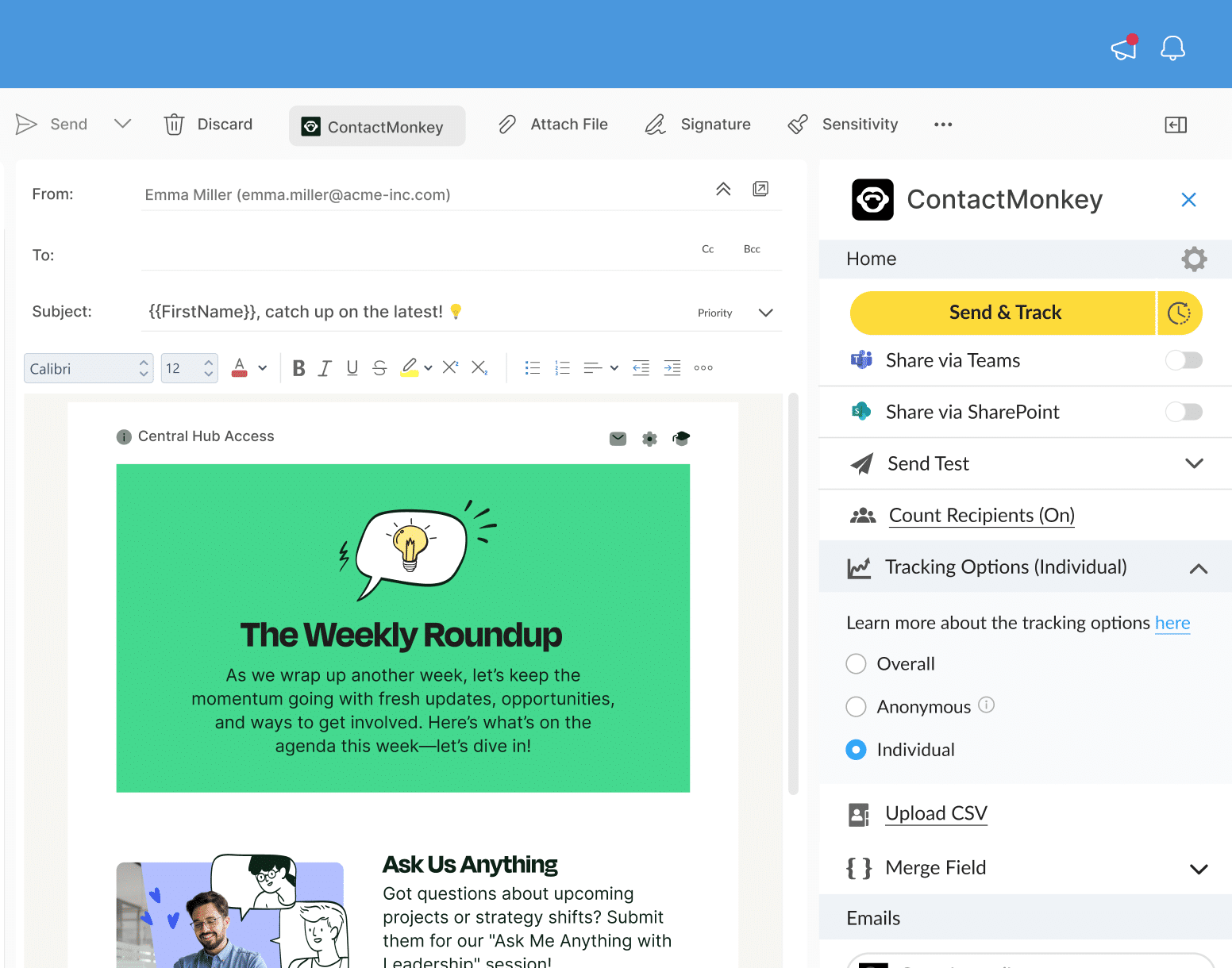
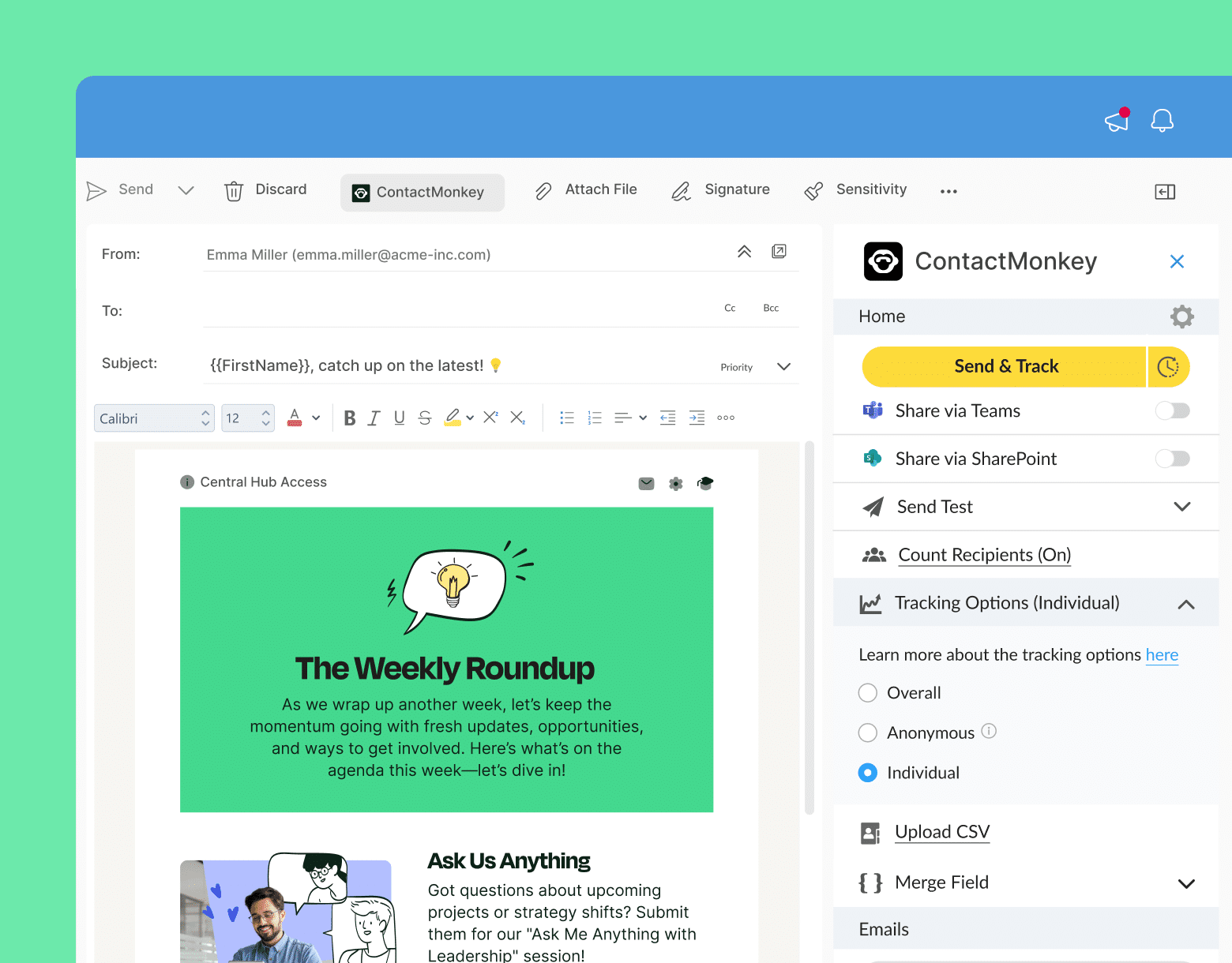
Work at a larger company? Send your new employee HR email templates to the distribution list containing the employees in the new hire’s department. If you don’t have department-specific distribution lists, you can easily learn how to create a distribution list in Outlook. Doing this will ensure that the right people get this update, without having to clog up the inboxes of those that might never interact with this team member.
You can increase email engagement by targeting relevant emails at your employees by using custom distribution lists. Using ContactMonkey’sList Managementfeature, you can create your own distribution lists quickly and easily, without needing approval from your IT department:
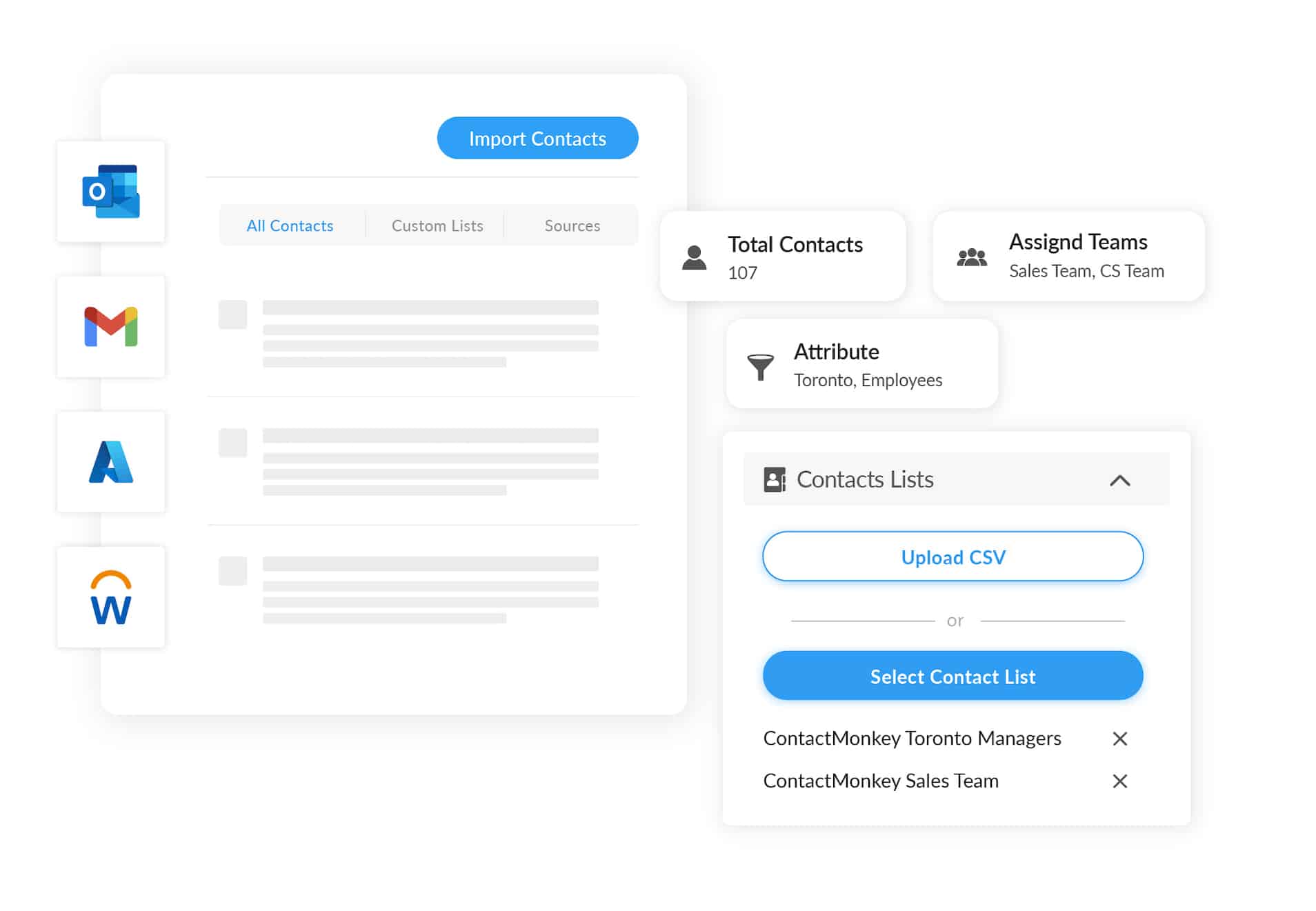
ContactMonkey syncs with your Human Resource Information System (HRIS) like Workday and Azure so your lists automatically update as employees leave and join your company. No more manually managing your employee email lists with bulky HR communications tools.
Once you have the right list, you can use ContactMonkey’s Gmail dashboard to select the send time of your emails.
You can pinpoint the best time to send your employee introduction emails using ContactMonkey’s email analytics. Look at past email campaigns and compare open rate, click-through rate, read time, and more to find when your employees are most likely to read your emails.
By maximizing the effectiveness of your introduction emails, you help both your new hire and your existing employees adjust to these new changes.
5 Tips For Writing an Introduction Email for a New Employee
To wrap it all up, here are 5 tips to keep in mind to craft the best new employee introduction template.
1. Keep it short and sweet
A welcome email should be concise so your staff can easily digest all the important information. You can always include a link to any additional resources they may need.
2. Use the employee’s name
Using the employee’s name makes them feel special and helps create a personal connection. This will make it easier for them to build relationships with their new colleagues right from the start.
Take a self-guided tour of ContactMonkey
See how our key features can streamline your internal communications.
Take product tour

3. Make sure you get all the details right
Be sure to double-check all the information you include in your welcome email. This includes any job titles, company policies or even their start date and time.
4. Include an actionable next step
Include a clear call-to-action for what the employee should do next so there’s no confusion about when they need to start and what they need to do.
5. Use ContactMonkey email tracking
With ContactMonkey’s email tracking feature, you can keep an eye on how your welcome emails are received and take action if an employee hasn’t opened the message within a certain timeframe. This is a great way to ensure everyone is off to a great start!
Send Introduction Emails The Smart Way
Send welcome emails to new employees with confidence knowing that you’re setting both your new hire and your company up for success for this next step. If you’re at a company that is frequently hiring new employees, then using an internal communications tool like ContactMonkey can save you time and increase the effectiveness of your emails.
Create better emails, collect employee feedback, and track email performance, all from your existing Outlook or Gmail inbox. After you’ve started starting welcome emails, be sure to measure your employee engagement to see if it had the desired effect.
Want to see ContactMonkey in action? Book a free demo to see how you can build amazing introduction emails and track their success.
